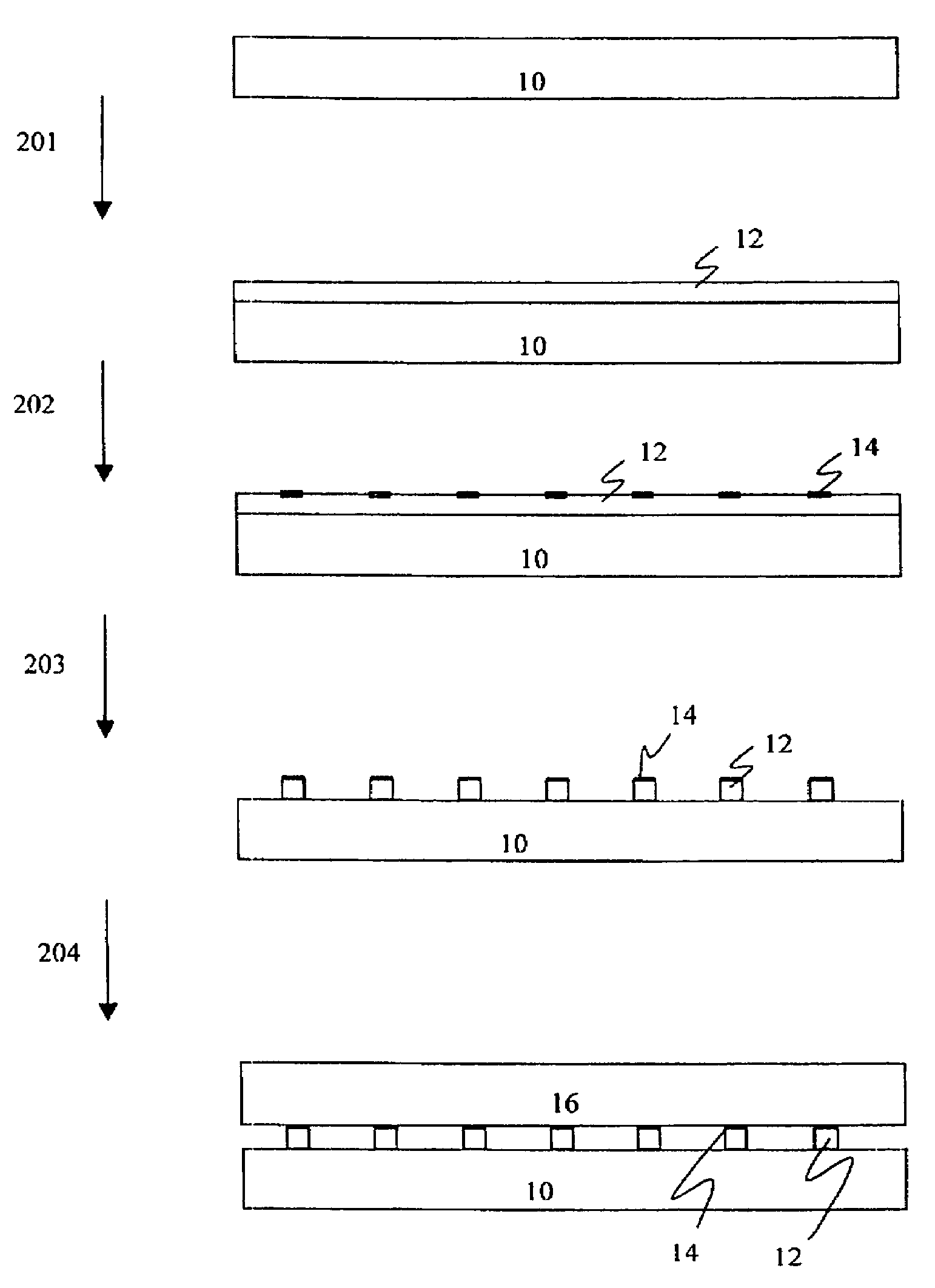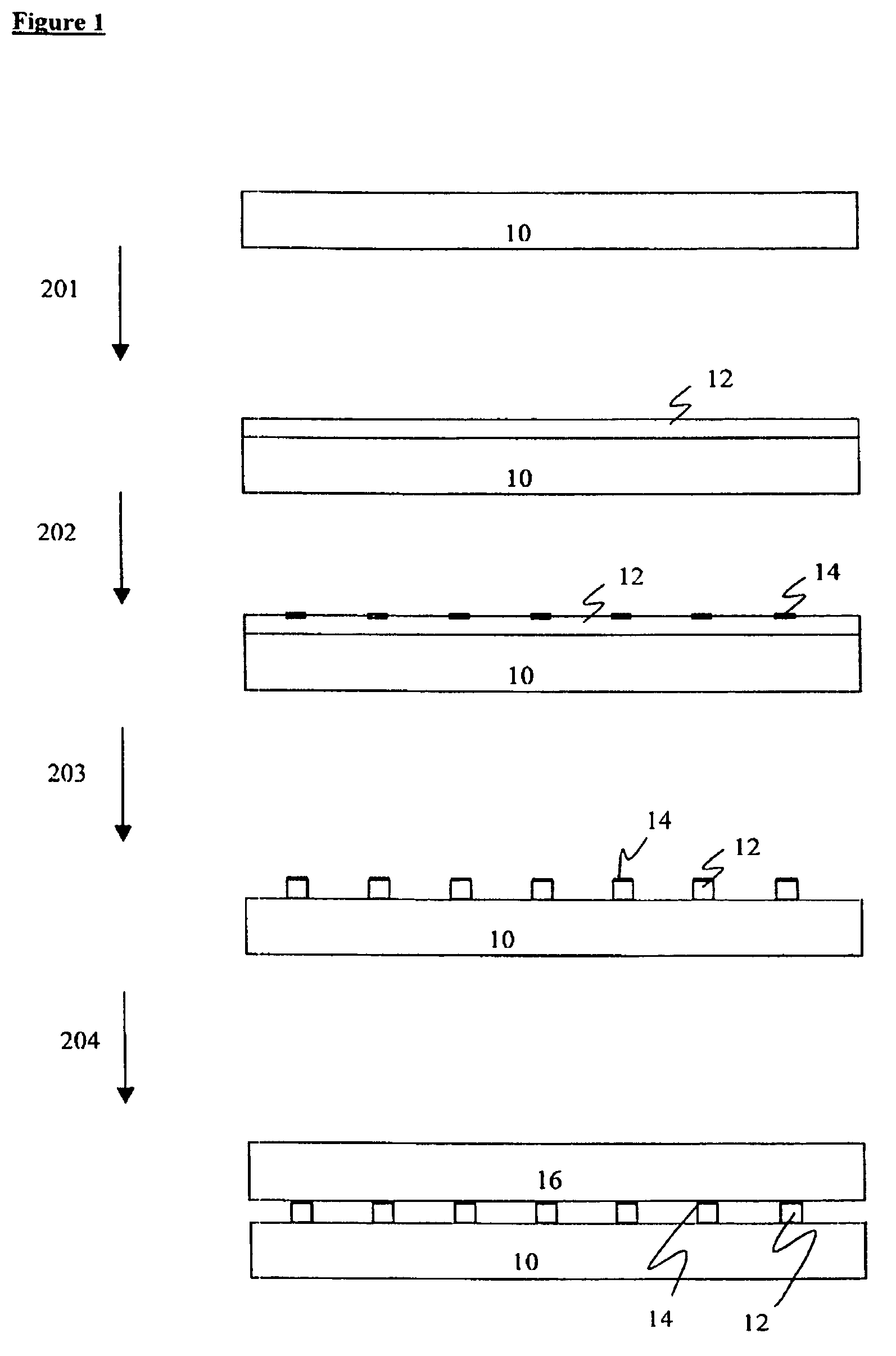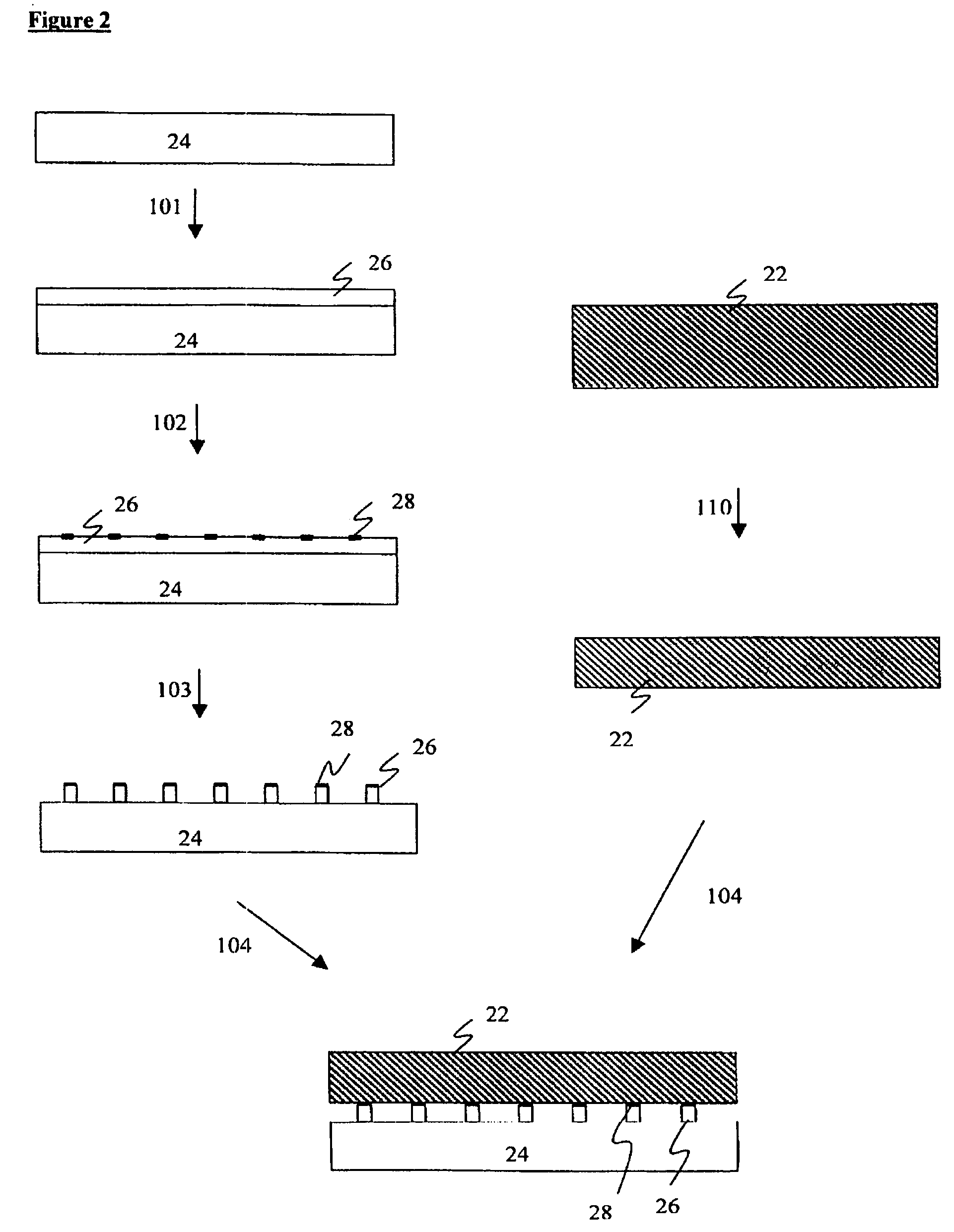Thermal tunneling gap diode with integrated spacers and vacuum seal
a gap diode and gap diode technology, applied in the field of cooling devices, can solve problems such as difficult manufacturing, and achieve the effects of reducing or eliminating the problem of thermal conduction between layers, reducing costs, and reducing the cost of creating gap diode devices
- Summary
- Abstract
- Description
- Claims
- Application Information
AI Technical Summary
Benefits of technology
Problems solved by technology
Method used
Image
Examples
example
[0048]Referring now to FIG. 4, shown is a circular silicon wafer 40 of 200 mm diameter. Arranged on the surface of wafer 40 are a plurality of rectangular electrodes 42, 25×20 mm2 in size. Rectangular electrodes 42 fill as much surface space of wafer 40 as is possible, while leaving an aisle 43 of 2 mm between each device. Referring now to FIG. 5, wafer 40 is oxidized to create an oxide layer 41 on the entire surface of wafer 40. FIG. 6 shows wafer 40 after dots have been formed on rectangles 42 and the oxide in between the dots removed. Oxide is also removed from aisles 43 in between rectangles 42.
[0049]It is understood that a second wafer of identical dimensions to wafer 40 is attached to wafer 40 in order to create a sheet of thermotunneling converters, which can then be cut into individual converters.
[0050]FIG. 7 shows one rectangular electrode 42 of wafer 40. Rectangular electrode 42 comprises a silicon wafer covered with a layer of oxidized silicon. A bond pad 46 of 5×20 mm is...
PUM
 Login to View More
Login to View More Abstract
Description
Claims
Application Information
 Login to View More
Login to View More - R&D
- Intellectual Property
- Life Sciences
- Materials
- Tech Scout
- Unparalleled Data Quality
- Higher Quality Content
- 60% Fewer Hallucinations
Browse by: Latest US Patents, China's latest patents, Technical Efficacy Thesaurus, Application Domain, Technology Topic, Popular Technical Reports.
© 2025 PatSnap. All rights reserved.Legal|Privacy policy|Modern Slavery Act Transparency Statement|Sitemap|About US| Contact US: help@patsnap.com



